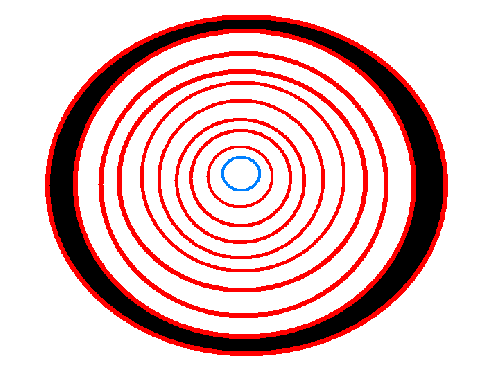
Spring Break. Image: Paddy Johnson
Welcome back to Explain Me! In an effort to produce content a little more regularly we’re trying something new: no editing. This means a little more baseless speculation, and off the cuff commentary, in return for actual podcasts! Yes!
In this episode we discuss news, art, and trends seen at The Armory, Spring Break and The Independent. Highlights include:
The Armory
- News! They’re moving to the Javits Center! Speculation about what that means.
- Adrian Wong with animal spiritual guide Lynn Schuster at Carrie Secrist Gallery
- Austin Lee at Jeffrey Dietch
- Kumasi J. Barnett at Ryan Lowell Projects
- Dominic Chambers at Anna Zorina Gallery
- Matt Bolinger at Zurcher
- Hannah Wilke and Cassils at Feldman Gallery
Spring Break
- Gallery Cubed’s Nathan Sinai Rayman
- Emily McElreath and Evan Pepper’s show of work by Jeila Gueramian
- Chambliss Giobbi’s A Room with a View
- Carlos Rosales-Silva
The Independent
- Galerie Jocelyn Wolff’s Miriam Cahn
- Various Small Fires’s Jessie Homer French
- Andrew Edlin Gallery
- Colored pencil and pastels

We cover a lot of ground in this episode of Explain Me. That ground looks something like this:

Donna DeSalvo assembles some of Andy Warhol’s greatest work for his retrospective at the Whitney Museum, while revelations that Whitney Vice Chair Warren B. Kanders owns a company that sells tear gas used at the border shake museum staff. Soul of a Nation at the Brooklyn Museum looks at the history of political activism, while Jack Waters offers a mix of bag of awe inspiring abject art paired with groan inspiring sculptures and paintings. Jack Whitten at the Metropolitan Museum dazzles, Art and Conspiracy flops, and Amazon is going to drive Queens residents out of their homes.
Listen ——>

Art F City is pleased to announce the launch of their new programming arm, PARADE, which supports and commissions civically engaged public art in Western Queens and beyond. Founded with a mission of fostering dialogue and connection through art, PARADE is co-directed by Paddy Johnson, writer, organizer and Art F City founder, and Nancy Kleaver, a nonprofit management arts education consultant, and community advocate.

It’s been a rough news week. Between Thursday’s testimonies of Dr. Christine Blasey Ford and Judge Brett Kavanaugh before the Senate Judiciary Committee, and Kavanaugh’s near appointment to the Supreme Court Friday, many of us are exhausted. We would like a win for women.
Sometimes the quickest way to achieve that is to do it yourself. As such, this episode of Explain Me celebrates women who have made waves in the world of art and activism, through a series of interviews with four major figures—Mia Pearlman (Make NY True Blue), Jenny Dubnau (ASAP), Nancy Kleaver (PARADE), and Mira Schor (Selected writing).
In the first half of the show, Mia Pearlman and Jenny Dubnau talk about their work pushing for changes at the city and state level and how being an artist makes that job easier. In the second half, Paddy Johnson and Nancy Kleaver talk about their new public art organization, PARADE, and Mira Schor talks about the history of feminism in art from the 1970’s through to today, and her contributions. Stream it. Download it. Listen to it. This one’s important.

LoVID‘s Tali Hinkis joins us in the studio to discuss the challenges of being a mid-career artist outside of New York. In this episode we discuss how to navigate it all from engaging a general audience to getting grants and networking. A refreshingly frank talk about what mid-career actually looks like for artists and what it takes to get there.

Last October, we published the first edition of our zine series, We’re So Not Getting the Security Deposit Back: A Guide to Defunct Artist Spaces in partnership with Beltway Public Works in DC. Today, we’re making it freely available to all in the form of a PDF. (If you want the physical version please contact AFC directly paddy@artfcity.com)

Since the early 1990s, artists have chosen the internet as a medium, an environment and a
forum. While some internet artists also maintain a gallery practice, the conditions and
conventions that inform meaning in online art remain in many ways distinct from those of
the off-line artworld. Internet art — inherently ephemeral and infinitely reproducible —
eludes commodification and largely operates independently of the art market.1 In the
online environment where acts of creative self-expression are the norm, the boundaries
between artists and not-artists that confer status and hierarchy in the gallery and museum
system are largely immaterial. Even among niche groups of online practitioners who self-
identify as artists, the culture of internet art regards the agency of the viewer on a par
with that of the artist. In most cases, viewers are also producers. Many online artists, such
as myself, operate through the medium of the blog format, which allows for a hybrid
practice blending art production with art criticism, cross-promotion and dialogue.

In this episode of Explain Me William Powhida and Paddy Johnson discuss the horrific business practices of Peter Brant and Interview Magazine, a fundraising campaign at University of North Carolina so misguided that firing is in order, and the latest headscratching Creative Time project. To help us discuss all of this, and how the new tax code will affect artists accountant and painter Hannah Cole joins us.

In Part II of Explain Me, William Powhida and I discuss the difference between relational aesthetics and social practice, the whims of the auction market and the perilous affect it can have on artist careers, and Doug Aitken’s train wreck of a show at 303 Gallery along with a handful of truly remarkable shows. Those shows listed after the jump.











